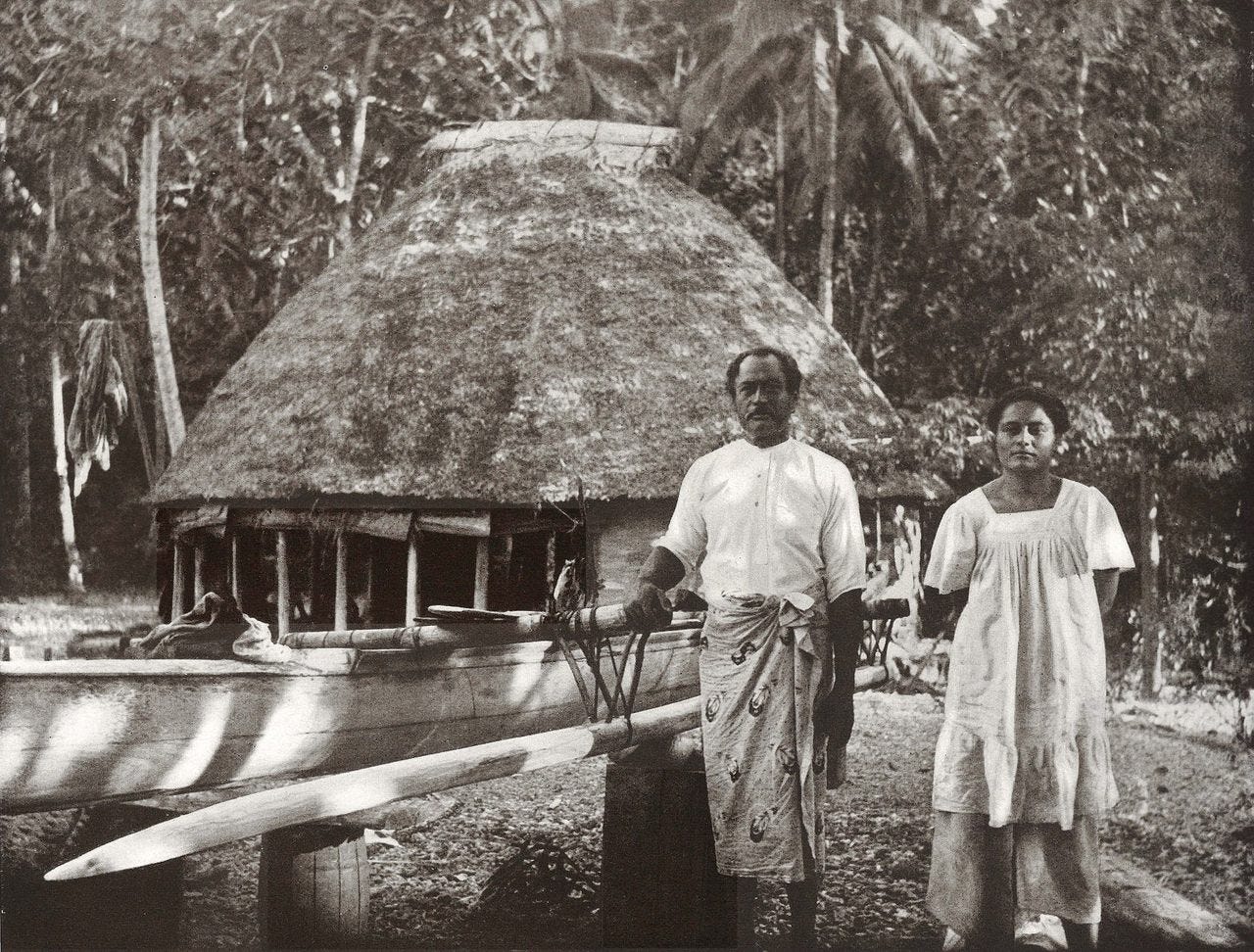Books had played a role in developing German public opinion on colonies, particularly Sāmoa. Richard Deeken’s Manuia Sāmoa! abetted the planter society that lingered for decades. Another with an uncanny impact was poet, painter and novelist Erich Scheurmann. His 117-page Der Papalagi - Die Reden des Südseehäuptlings Tuiavii aus Tiavea, or The Papalagi, published in 1920, still attracts naive readers seeking pseudo-Polynesian mythology. Scheurmann claimed it to be a collection of 11 speeches made by matai Tuiavi’i of Ti’avea in north east ‘Upolu. Born in Hamburg in 1878, Scheurmann wandered Germany’s literary and arts circles. He met and married a young and wealthy Saxon, settling down at Lake Constance, on the German-Swiss border. In the neighbourhood was novelist Hermann Hesse who sparked Scheurmann’s wanderlust. With two moderately successful novels produced, Scheurmann received an advance to write a book on German Sāmoa. Aged 36, he left his ailing wife and headed south on the Reichspost steamship Scharnhorst for the ‘paradise of the South Seas’ in June 1914. Two months later New Zealand soldiers invaded and Scheurmann was interned. In November 1915 he was allowed to leave for the United States. When they entered the war, he was again locked up. After the war and back in Germany, a novel, Paitea & Ilse, appeared, a tale of a young German marrying a Sāmoan girl. It ended badly. A year later came Der Papalagi. Scheurmann claimed Tuavi’i had been a member of one of the cultural circuses that featured at the time. The matai title Tuiavi’i is noted in Krämer’s volume, from Ti’avea. Scheurmann could have simply borrowed it from that as it had been available for 14 years, and was already a handbook for fa’a Sāmoa. Scheurmann’s great-granddaughter Jessica Rottschäffer has studied the work and believes Tuiavi’i is most likely a composite character.
Keep reading with a 7-day free trial
Subscribe to Michael Field's South Pacific Tides to keep reading this post and get 7 days of free access to the full post archives.




